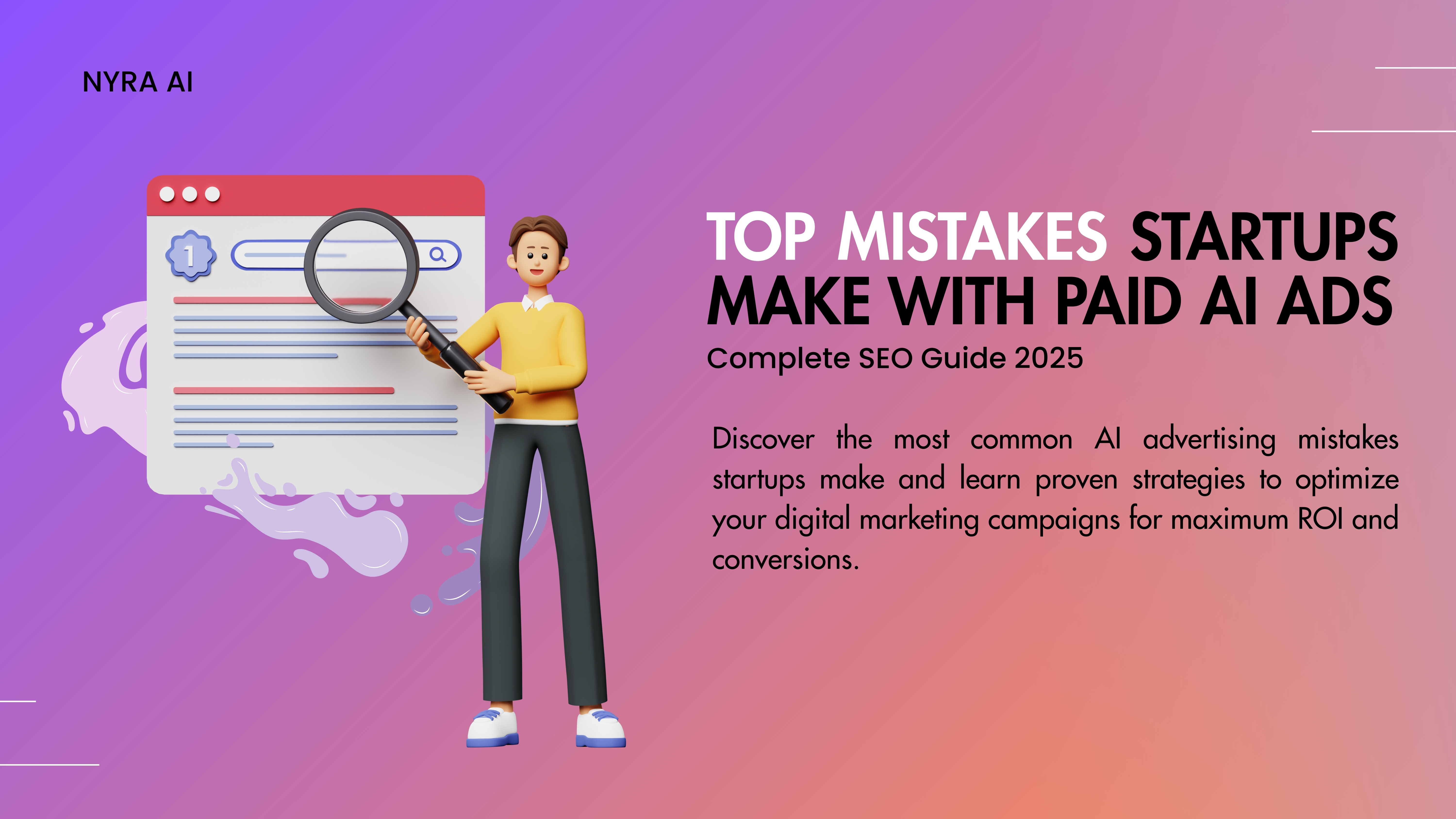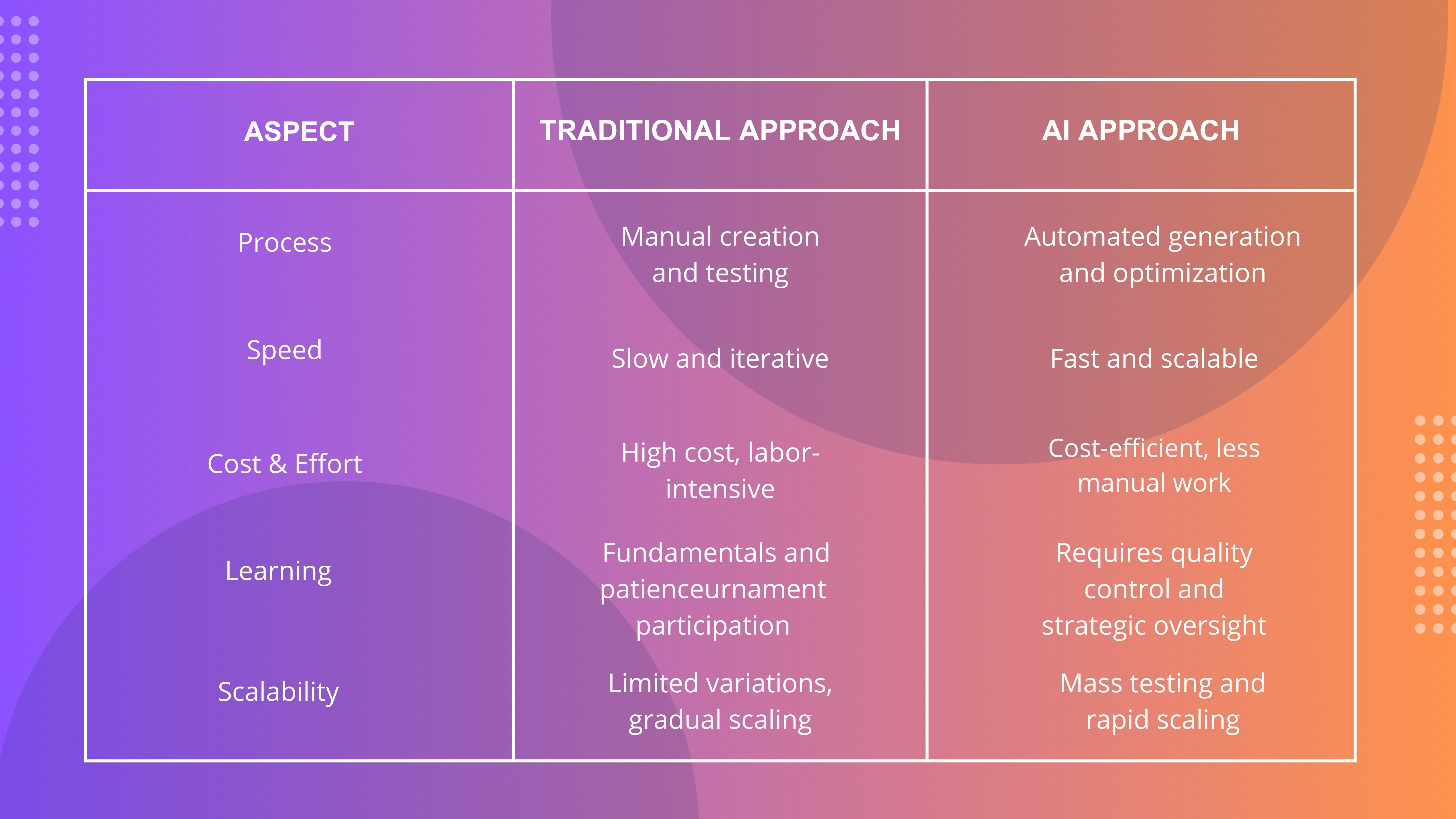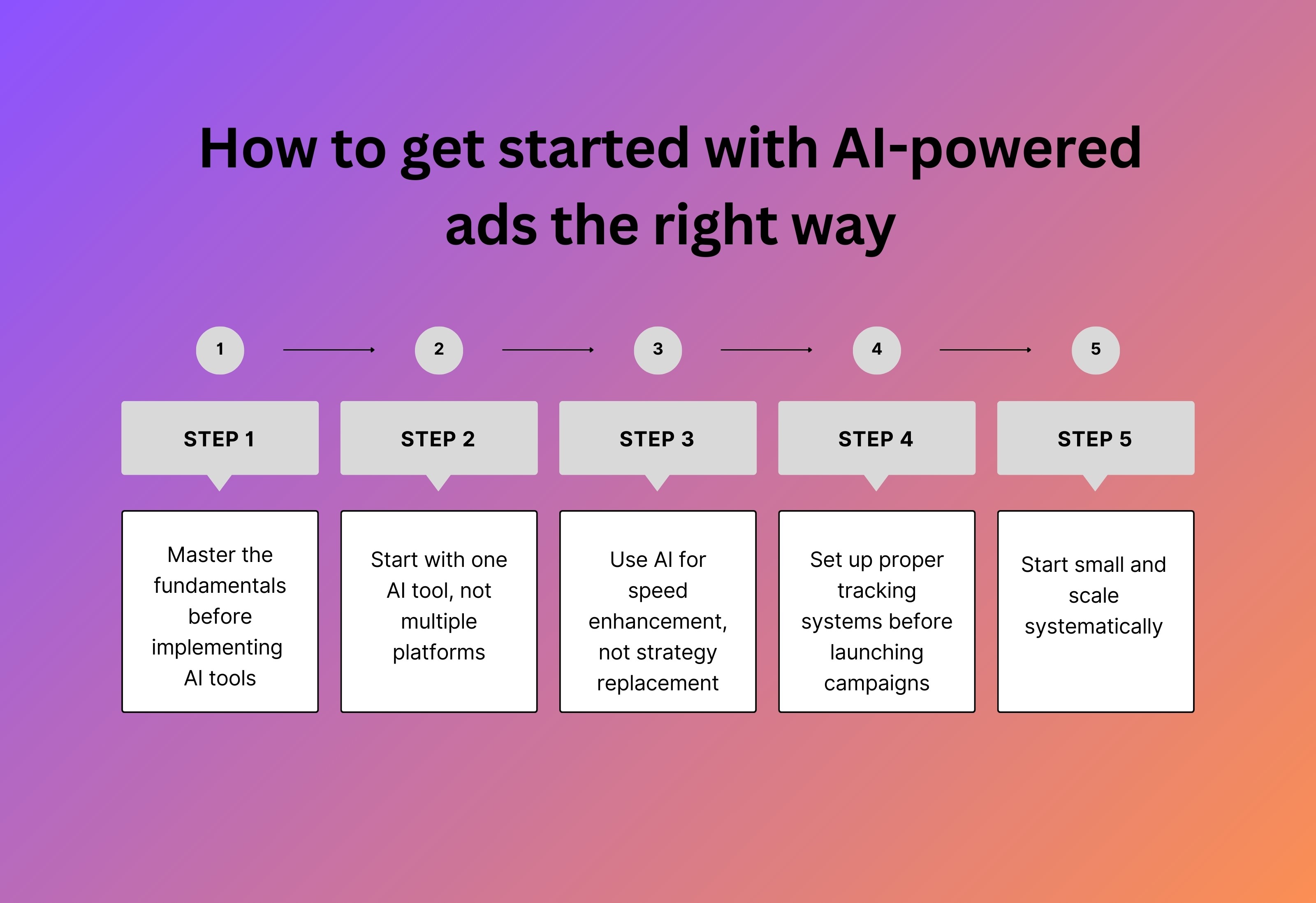Top Mistakes Startups Make With Paid AI Ads: Complete SEO Guide 2025

Startups are burning through marketing budgets using AI advertising tools without seeing results. The creatives look professional, the targeting appears precise, and the copy seems compelling – but conversions remain at zero. This comprehensive guide reveals the most common AI advertising mistakes and provides actionable strategies to optimize your campaigns for maximum return on investment.
AI advertising tools offer incredible power for startups, but they're incredibly easy to misuse. Most startups make predictable mistakes, burning through precious runway while competitors gain market share. Understanding these pitfalls and implementing proper strategies can transform your advertising performance and accelerate growth.
What are the most common paid AI advertising mistakes?
Treating AI like a magic solution instead of a strategic tool
This represents the fundamental error most startups make. Entrepreneurs believe AI tools will automatically generate profitable campaigns without understanding audience research, message testing, or metric optimization. AI amplifies existing strategies – if your marketing foundation lacks strength, AI accelerates failure rather than success.
Generating ads without understanding platform algorithms
Facebook's AI, Google's AI, and third-party AI tools operate differently. Startups create hundreds of AI-generated advertisements that appear professional but perform poorly because they don't understand how each platform's algorithm functions. Beautiful AI creative becomes worthless if the platform won't display it to target audiences.
Over-relying on AI for audience targeting optimization
AI tools promise to identify "perfect audiences," but they often make assumptions based on limited data. Meanwhile, real marketing budgets fund these algorithmic guesses. Successful startups spend significant amounts targeting AI-recommended audiences that have no connection to actual customer profiles.
Creating ads that look obviously AI-generated
The artificial, over-saturated aesthetic common in AI-generated content damages conversion rates. Consumers easily identify AI-generated advertisements, which often signals "cheap" or "fake" quality. Audience recognition hurts brand credibility and reduces campaign effectiveness.
These mistakes destroy advertising budgets faster than traditional marketing approaches while delivering worse results.
Startup AI Ads vs. Traditional Paid Advertising Approaches
Understanding the differences between AI and traditional advertising approaches helps startups avoid common pitfalls and optimize campaign performance.
 Successful AI advertising requires deeper understanding of advertising principles, not less knowledge than traditional methods.
Successful AI advertising requires deeper understanding of advertising principles, not less knowledge than traditional methods.
Why Startups Are Struggling With AI-Powered Ads Now
Tool advancement outpaces educational resources
New AI advertising tools launch weekly, each promising revolutionary results. Startups jump between tools without mastering any single platform. This resembles buying advanced equipment without developing operational skills.
Platform policies change constantly
Facebook and Google update AI policies monthly. Previously successful strategies might violate current policies and result in account suspensions. Startups lack dedicated compliance teams to track these changes, leading to accidental violations and campaign shutdowns.
AI hype creates unrealistic expectations
Investors and advisors pressure startups to implement AI tools for everything. Founders feel compelled to use AI even when traditional methods would deliver better results. They optimize for innovation appearance rather than business outcomes.
Budget constraints make mistakes expensive
Large companies can afford $50,000 AI experiments to discover effective strategies. Startups cannot waste significant portions of limited budgets. Every dollar matters, but AI tools facilitate rapid spending without guaranteed results.
The talent gap creates implementation problems
Most marketing professionals lack deep AI tool expertise. They understand basic usage but cannot optimize advanced features. Startups hire "AI marketing experts" who are early adopters with limited proven experience.
Types of AI Advertising Mistakes Startups Make
Creative mistakes that destroy conversion rates
- Using obviously AI-generated people in customer testimonials
- Creating advertisements identical to competitors using same AI tools
- Generating content that doesn't match established brand voice
- Over-polishing images until they appear fake and sterile
- Ignoring platform-specific creative requirements and specifications
Targeting mistakes that waste advertising budgets
- Allowing AI tools to define audiences instead of using customer data
- Creating too many audience segments and diluting budget effectiveness
- Trusting AI audience expansion without validating actual results
- Ignoring demographic data that contradicts AI recommendations
- Not excluding existing customers from customer acquisition campaigns
Strategy mistakes that compound over time
- Optimizing for AI-recommended metrics instead of business outcomes
- Testing too many variables simultaneously and generating unclear results
- Jumping between AI tools without allowing sufficient learning time
- Ignoring qualitative customer feedback in favor of AI-generated insights
- Not connecting AI advertisement performance to actual revenue and lifetime value
Technical mistakes that break campaign performance
- Poor integration between AI tools and tracking systems
- Inconsistent UTM tagging across AI-generated campaigns
- Not establishing proper conversion tracking before campaign launch
- Mixing AI-generated and human-generated content without clear attribution
- Ignoring platform-specific technical requirements and limitations
These mistakes often occur simultaneously, compounding their negative impact on campaign performance and budget efficiency.
How These AI Ad Mistakes Impact Startup Growth
Burned runway with minimal results
Startups making these mistakes typically burn through 30-40% more advertising budget than necessary. This represents a runway that cannot be recovered. For seed-stage companies, this waste could determine the difference between reaching product-market fit and running out of funding.
Damaged brand reputation from poor creatives
AI-generated advertisements that appear cheap or fake don't just fail to convert – they actively damage brand perception. Consumers remember negative advertising experiences. Startups struggle to overcome negative first impressions created by poorly executed AI campaigns.
Lost competitive advantage in market positioning
While startups struggle with AI tools, competitors gain market share through effective traditional methods or proper AI implementation. Either approach allows competitors to capture audience attention while startups waste resources.
Team morale and confidence deterioration
Dramatic AI campaign failures affect entire teams. Marketing professionals question their capabilities. Co-founders question marketing budget allocation. Investors question leadership judgment. Success builds momentum, but failure creates negative feedback loops.
Missed learning opportunities about customers
Failed AI campaigns don't just waste money – they generate incorrect data. Teams develop wrong conclusions about audience preferences, messaging effectiveness, and channel performance. These false insights damage future campaigns even after fixing AI issues.
Poor AI campaign performance can delay Series A funding by months and reduce valuation due to decreased investor confidence in go-to-market strategy.
How to Get Started with AI-Powered Ads the Right Way

Master the fundamentals before implementing AI tools.
Before using any AI tool, ensure understanding of customer profiles, value propositions, and key metrics. AI amplifies existing knowledge. Without these basics, AI cannot provide missing strategic insights.
Start with one AI tool, not multiple platforms.
Choose one tool that addresses your biggest bottleneck. If creative production limits growth, start with Midjourney or AdCreative.ai. If audience research creates problems, try Audience Insights tools. Master one platform before adding others.
Use AI for speed enhancement, not strategy replacement.
Allow AI to handle repetitive, time-consuming tasks while maintaining focus on strategy and optimization. Use AI for generating multiple advertisement variations, not for deciding which variations to test.
Set up proper tracking systems before launching campaigns.
Ensure measurement capability for important metrics: actual conversions, revenue generation, customer lifetime value. Don't optimize for AI-recommended metrics unless they directly correlate with business outcomes.
Start small and scale systematically.
Begin with $50-100 daily budgets. Test AI-generated creatives against best-performing traditional advertisements. Only scale AI approaches when they consistently outperform baseline performance.
Startup AI Advertising FAQ
Q: Should I use AI tools for advertising if I'm pre-revenue?
A: Generally not recommended. AI tools perform best with existing data for training. Without proven messaging, clear customer segments, and conversion tracking, focus on traditional advertising first. Acquire your first 100 customers manually, then use AI to scale proven strategies.
Q: Which AI advertising tool should I start with?
A: Choose tools that solve your biggest bottleneck. If creating advertisement variations takes too long, try AdCreative.ai or Canva's AI features. If copywriting creates problems, start with ChatGPT or Jasper. Don't attempt solving everything simultaneously.
Q: How much should I budget for AI advertising experiments?
A: Start with 10-20% of total advertising budget. Test AI approaches against current methods. Only increase budget allocation when AI consistently outperforms baseline performance. Don't risk entire runway on untested AI tools.
Q: Can AI tools replace my need for a marketing team?
A: No. AI tools offer power but require human strategy, oversight, and optimization. They can reduce team size requirements or improve existing team effectiveness, but cannot replace human judgment and creativity.
Q: How do I know if my AI ads are working?
A: Measure identical metrics used for traditional campaigns: cost per acquisition, return on advertising spend, customer lifetime value. Don't focus on AI-specific metrics unless they directly correlate with business outcomes.